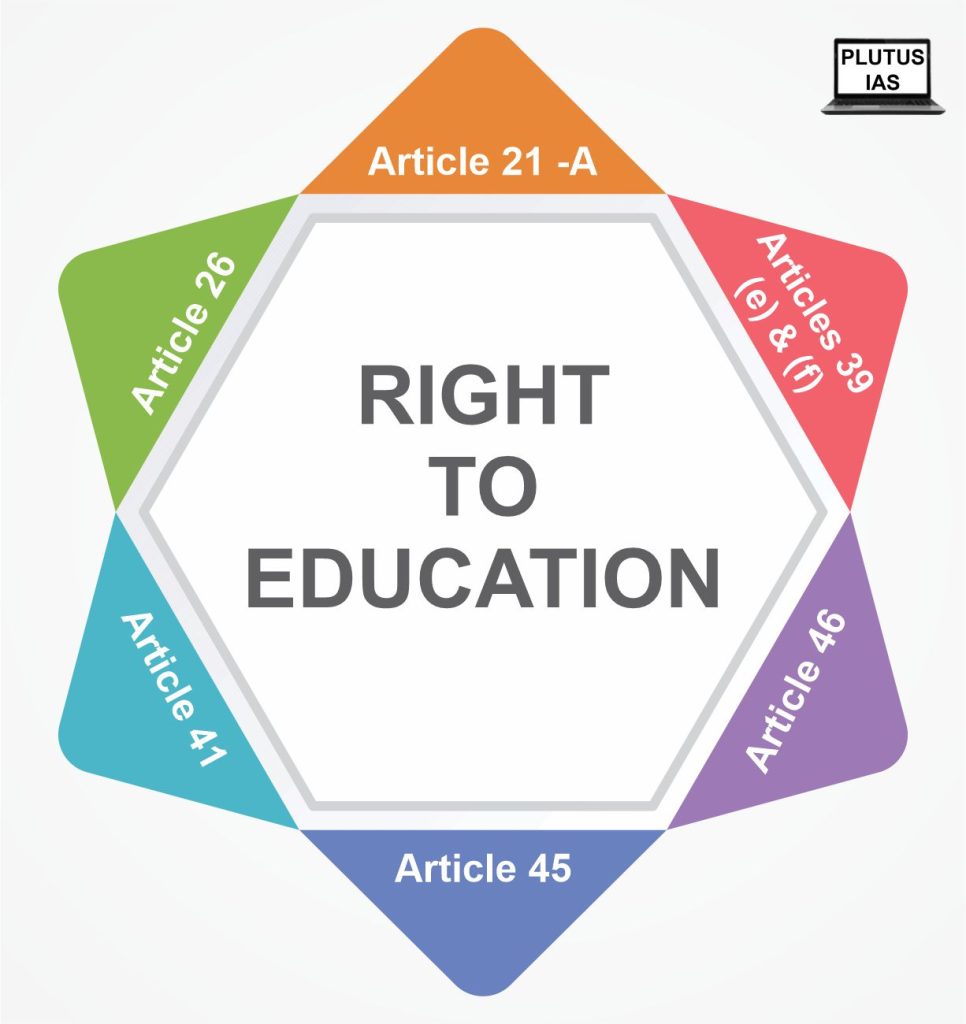29 Feb Exclusion of Maharashtra’s private schools from the RTE admission quota
This article covers ‘Daily Current Affairs’ and the topic details of ””.This topic is relevant in the “Polity and governance” section of the UPSC CSE exam.
Why in the News?
The Maharashtra School Education Department published a gazette notification omitting private unaided schools from the obligatory 25% admission quota for underprivileged and weaker sections, subject to certain restrictions.
Key Provisions of the RTE Act
Right to Free and Compulsory Elementary Education:
Children aged 6 to 14 are entitled to receive free and mandatory education in local schools, ensuring enrollment in an age-appropriate class for those over 6 not attending school.
Aided schools are obligated to provide education for free, commensurate with their funding but not falling below 25%.
Elementary education remains cost-free until completion, and no child can face retention, expulsion, or the obligation to pass a board exam before finishing elementary education.
Curriculum and Recognition:
An academic authority appointed by the central or state government must formulate the curriculum and assessment procedures for elementary education.
All schools must adhere to stipulated pupil-teacher ratio norms and meet specified standards before establishment or recognition.
Teacher qualification must be verified through the Teacher Eligibility Test (TET) administered by the relevant government.
Responsibilities of Schools and Teachers:
Teachers are prohibited from engaging in private tuition or non-teaching activities, excluding census, disaster relief, and election duties.
Schools are mandated to institute School Management Committees (SMCs). SMCs are comprised of local authority representatives, parents, guardians, and teachers, overseeing the school’s utilization of government funds and formulating a school development plan.
Grievance Redressal:
The National Commission for the Protection of Child Rights examines safeguards and investigates complaints, possessing powers akin to a civil court; the state government may also establish a State Commission for analogous functions.

The New Rule:
Exemption for Certain Schools: Private unaided schools located within a one-kilometre radius of a government or government-aided school are no longer required to reserve 25% of their seats for students from disadvantaged groups and weaker sections under the RTE quota.
Priority for Government Schools: Instead, students in these areas will be given priority for admission to government or aided schools, aiming to ensure access to subsidized education.
Exceptions and Reimbursements: If there are no aided schools nearby, private schools may still be selected for RTE admissions. However, the notification emphasizes that the state will reimburse fees for these students, addressing a major concern raised by private institutions regarding the previous policy.
Reasons for Exemptions:
Similar Reasoning by Other States: Karnataka faced a similar situation where the RTE policy led to a decline in government school enrollment. Their 2018 exemption notification, citing the Act’s primary goal of providing education to all, is currently under legal review.
Arguments Against the Change:
- Legality: Experts question if states have the authority to modify central laws, arguing that the notification contradicts the RTE Act’s spirit and should be avoided.
- Equality Concerns: The exemption weakens efforts to combat educational inequities, as the 25% quota played role in promoting inclusivity.
Arguments In Favor:
- State’s Authority: Maharashtra clarifies that the changes apply to the state’s implementation rules, not the central law itself. They emphasize their power under Section 38 of the RTE Act to formulate such rules.
- Temporary Measure: The government argues that Section 6 prioritizes establishing government schools in unserved areas. It makes the 12.1(C) quota a temporary measure until such schools are operational.
- Private Schools’ Perspective: Private schools welcome the change, believing it will encourage enrollment in government schools.
Download plutus ias current affairs eng med 29th Feb 2024
Prelims practice question
Q1. Consider the following statements: (UPSC Prelims-2018)
- As per the Right to Education (RTE) Act, to be eligible for appointment as a teacher in a state, a person would be required to possess the minimum qualification laid down by the concerned State Council of Teacher Education.
- As per the RTE Act, for teaching primary classes, a candidate is required to pass a Teacher Eligibility Test conducted in accordance with the National Council of Teacher Education guidelines.
- In India, more than 90 % of teacher education institutions are directly under the State Government.
Which of the statements given above is/are correct?
(a) 1 and 2
(b) 2 only
(c) 1 and 3
(d) 3 only
Answer: (b)
Mains practice question
Q1. The Right of Children to Free and Compulsory Education Act, 2009 remains inadequate in promoting incentive-based systems for children’s education without generating awareness about the importance of schooling. Analyse. (UPSC Mains-2022)




No Comments